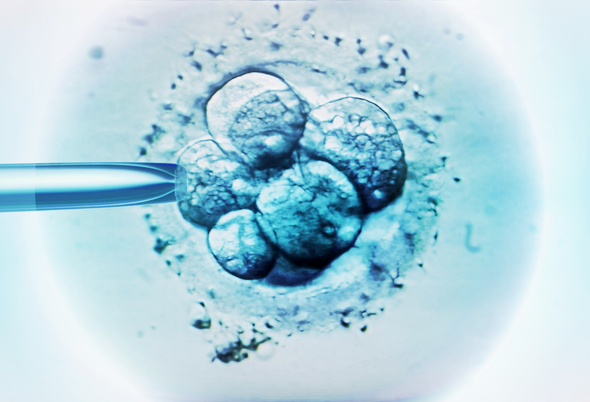Genetically modified human embryos: that’s how they did it

Genetically modified human embryos: that’s how they did it
The news was leaked last week, but today the scientific journal Nature publishes the entire study on genetically modified human embryos. The experiment, which took place in the United States and was coordinated by the Oregon Health and Science University, used the new and very powerful Crispr-Cas9 technique to correct a gene responsible for heart disease. The development of the embryos was blocked after a few days: the ethical questions in the face of the possible birth of GMO children are too burning. But if the pregnancy had been completed, not only would healthy babies be born. Even their children would be safe from the dangerous genetic mutation.
The corrected gene is responsible for hypertrophic cardiomyopathy, which affects one in 500 people and can cause, among other things, the sudden death of athletes. It is located on chromosome 11. At the time of in vitro fertilization, together with the spermatozoa carrying the affected gene, the researchers also introduced Crispr, a system composed of two elements: an enzyme capable of cutting the DNA like a real pair of scissors and a sequence of genetic “letters” written by researchers in the laboratory to indicate the exact point at which to cut.
So far, two similar experiments on human embryos had been conducted in China in 2015 and 2016. In both cases the results had been modest, with many cuts caused by Crispr in the wrong points of the DNA. “We used a safe procedure and achieved a good degree of efficiency,” said Juan Carlos Izpisua Belmonte of the Salk Institute, one of the co-authors of the study, today. Normally, a child’s chances of inheriting a copy of the sick gene from one of the parents would have been 50%. Crispr’s intervention brought this percentage to 72% (42 embryos of the 58 used), a sign that the technique of “cutting and pasting of DNA” still has relevant failure rates. “But we count on being able to reach 90, if not 100%,” explained Shoukrat Mitalipov of the University of Oregon,
On the other hand, American researchers (Chinese and South Korean geneticists also collaborated in the experiment) did not identify any “collateral damage” to the genome of their embryos. In fact, Crispr – a still new and controversial technique , arrived in the laboratories in 2012, around which a furious legal battle for the patent is underway – cuts the double helix even at different points from that desired by the researchers. This is one of the main reasons for caution in the face of its widespread application, together with the fear that such a simple and inexpensive method will lead to the creation of “custom-made babies” by improvised laboratories.
There are about 10 thousand known diseases that are caused by a single mutated gene. Theoretically, they could all be corrected using Crispr, although among the details of the experiment published today by Nature emerges an aspect that cools enthusiasm. When Crispr cuts the DNA where there is a defect, the double helix immediately tries to mend. The researchers then use the trick of inserting a corrected gene into the nucleus of the cell, which – at least theoretically – should be caught by the DNA and used as a patch. In this way it is possible not only to cut off a mutated gene, but also to replace it with an artificial copy of the correct gene. In the American experiment this happened in a single embryo: all the others, among the 42 in which Crispr acted successfully, they had simply resorted to the maternal copy of the gene, originally healthy. In genetic diseases where even a single defective copy can cause problems, this type of intervention would have been useless.
Eleven international scientific societies, including the American Society of Human Genetics and the British Wellcome Trust, have already made their voices heard in protest, with a note that encourages Crispr’s clinical application studies, but also calls for more caution (in particularly the prohibition of carrying on pregnancies) in the use of a technique capable of altering not only the DNA of a child who will still have to be born, but also that of all his descendants. Faced with these doubts, Darren Griffin of the University of Kent also launched another provocation: “Is it right morally not to intervene when we have the means to prevent a deadly disease?”


